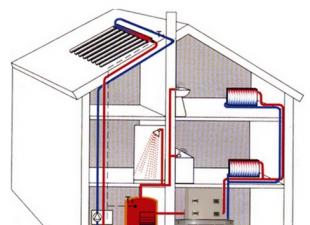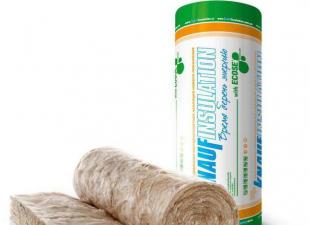Despite the fact that penofol is primarily a heat-insulating material and is used to reduce heat loss during the construction and repair of various premises, the material is often used as a vapor barrier layer. Foil penofol does not allow moisture to pass through itself and can be used as a waterproofing layer when insulating with mineral wool of various designs. Consider in the article in more detail the pros and cons of penofol and its characteristics.
Today, the number of thermal insulation materials offered by manufacturers is so great that not everyone has heard of some of them. A material such as penofol is known to many, as it has good thermal insulation properties and characteristics. Due to its properties, foil penofol will protect against extraneous noise and moisture absorption, and will also significantly reduce heat transfer in the room.
The structure and parameters of penofol
The insulation consists of several layers - between the layers of aluminum foil there is a self-extinguishing polyethylene foam. The thickness is up to 30 microns, and the proportion of the substance is about 99.4%, as a result, an organic insulation of small thickness and weight is obtained, which does not contain harmful additives. Penofol works on the principle of a thermos - it reflects thermal radiation, practically without absorbing it.
The term "penofol" does not mean a heater, but a brand. Reflection of heat by Penofol occurs according to the principle of a thermos. There are a number of materials that reflect thermal energy - precious metals (platinum, silver, gold) and highly polished aluminum. Rays of thermal energy reaching the surface of the material are reflected by 99% towards the warm room.
Developers are gradually moving to reflective thermal insulation materials, as they are beneficial. Gradually, such heaters for waterproofing ceilings in the bath and in other rooms will take a leading position. Today, many materials are produced under the brand name PENOFOL, we will list the most popular brands. Among them, penofol type "A", covered with foil on one side, can be distinguished.
Characteristics of foil penofol
Penofol foil on one side - type "A"
Penofol foil on both sides - type "B"
Foil self-adhesive penofol - type "C"
Penofol type "C" refers to self-adhesive materials - a polished aluminum coating is applied to the polyethylene layer on one side, and on the other side a layer of moisture-resistant glue. It is used where it is difficult to mount ordinary penofol, for example, from the inside. Penofol combines the reflection and absorption of thermal energy, which reduces heat loss in the house in winter.

Penofol thickness. The thicker the material, the more expensive the insulation. The cost and the main technical characteristics of foil penofol are directly affected by the number of foil layers - one or two. Standard thickness of foil foam: 10, 8, 5, 4 and 3 mm. Rolled insulation 10 mm thick with a double layer of foil is the most expensive, but it will retain heat best of all.
Heat conduction. Since the insulation combines the reflection of heat and its absorption, it is difficult to compare the characteristics of penofol with mineral wool or the characteristics of foam. If we take a material up to 5 millimeters thick, covered with aluminum foil on both sides, we get a resistance of up to 1.23 square meters Celsius per watt, which corresponds to a layer of at least 10 cm.
Vapor permeability and sound absorption. Penofol almost does not absorb moisture, is an excellent barrier to evaporation, which distinguishes the insulation from most modern materials. The coefficient of vapor permeability of penofol is less than 0.001 mg per meter-hour-Pascal. Penofol allows you to save the room from noise from the street.
Service life and safety. The material refers according to the standards to substances that do not support combustion. When fired, polyethylene releases water and carbon dioxide. Polyethylene foam is environmentally friendly and lasts up to 200 years, a layer of foil can protect against the influence of electromagnetic radiation, reducing them by half.
Table. Technical characteristics of penofol

The use of penofol in construction
Based on the foregoing, the penofol insulation has universal technical characteristics, it can be used for inexpensive thermal insulation of country houses and for insulation of high-rise buildings. Offices, residential and industrial premises, steam rooms from the inside can be quickly isolated with this material. Roll material, ventilation in apartments and heating pipes in houses.
Foil penofol will help to keep warm in the winter in the house, and in the summer it will block the way to the summer heat. But, like other heat-insulating materials, penofol is not without its shortcomings, we will consider at the end of the article in more detail what they are, because the disadvantages of the material should also be taken into account.
Advantages and disadvantages of penofol
1 . Foamed polyethylene as a basis for finishing does not have sufficient rigidity; it is impossible to plaster over it or use material for wallpapering. From strong pressure, the thermal insulation is compressed and sags, later the deformation may not be restored.
 budivel.ru About the insulation and heating of the house.
budivel.ru About the insulation and heating of the house.


